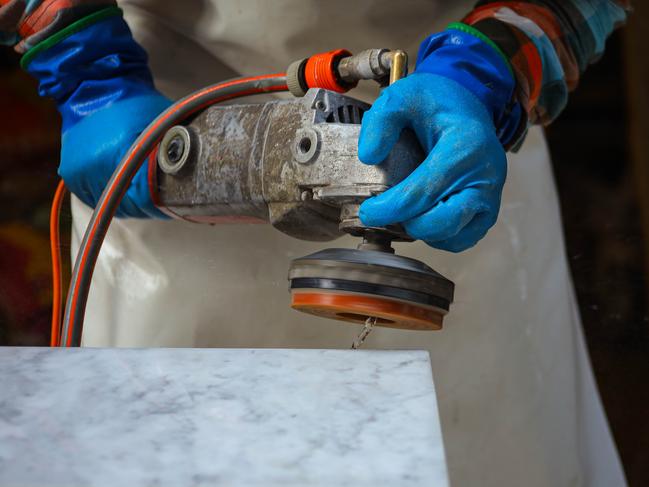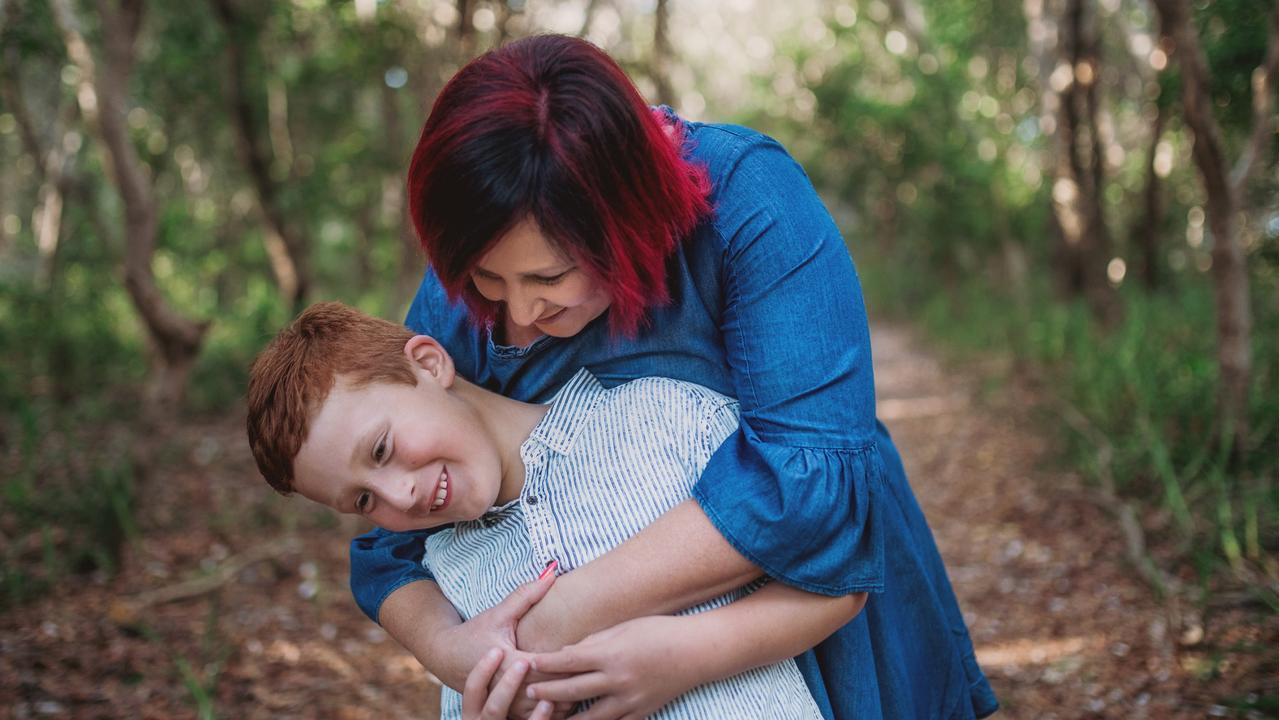Disturbing detail in understanding of ‘new asbestos’ concerns
A disturbing detail has been discovered in those most at-risk when in comes to what is being labelled the “new asbestos” found in common kitchen item.

Health
Don't miss out on the headlines from Health. Followed categories will be added to My News.
A disturbing detail has been discovered in those most at-risk when in comes to what is being labelled the “new asbestos” that is plaguing the construction and mining industries.
Lung Foundation Australia is exposing the risk of silicosis, which impacts more than 600,000 Aussies in the construction, mining, manufacturing and tunnelling industries.
Silicosis is caused by items with a high silica content such as engineered stone — which has been linked to the incurable illness since 2015. Engineered stone is a common item used in kitchen benchtops but is banned in Australia.
Workers need to be in full protective gear to cut the engineered stone while it’s wet for it to be considered “safe”.
However, a survey of more than 500 people in the most vulnerable industries revealed that only 36 per cent knew what symptoms to look out for.
Symptoms include a persistent cough, shortness of breath and difficulty breathing, which can appear from a few weeks to many years after exposure to silica dust.

A whopping 78 per cent are aware of silica dust and the risk of silicosis but only 23 per cent are worried about developing the lung condition. Only eight per cent have discussed it with a health professional and just 34 per cent understand it’s incurable.
Last year, Safe Work Australia pushed for a total ban on engineered stone amid fears it would become the next asbestos issue when it comes to construction worker health.
It resulted in engineered stone — which is safe for those living in a home after it is installed — being banned in Australia on July 1, 2024, and from September 1, 2024, builders needed a permit to work with legacy engineered stone — the world’s first domestic ban on use, supply and manufacturing of the item.
It was announced last month that from January 1, 2025, there will be a ban on importation that will see $32.1 million over two years given to the Australian Border Force to implement the prohibition.
The Lung Foundation argued that despite the ban on engineered stone, workers continue to be exposed to silica dust.
Mark Brooke, the CEO of Lung Foundation Australia, said: “While the recent ban on engineered stone marks a significant step forward in protecting workers from
silica dust, there’s still more work to be done.

“There is an ongoing need for awareness, better education, and a cultural shift in how we address workplace lung health.”
He encouraged workers and employers to remain focused on silicosis, even as regulation changed reduced the risk.
Many workers have already revealed they have been impacted by the incurable illness.
Tristan Wilson worked as a stonemason for five years before he was diagnosed with silicosis and told he will need a lung transplant.
“Are they waiting for more people to get sick? Are they waiting for death to start happening … for the bodies to start coming in?” Mr Wilson told the ABC.
“Because it’s going to happen.”
Originally published as Disturbing detail in understanding of ‘new asbestos’ concerns





